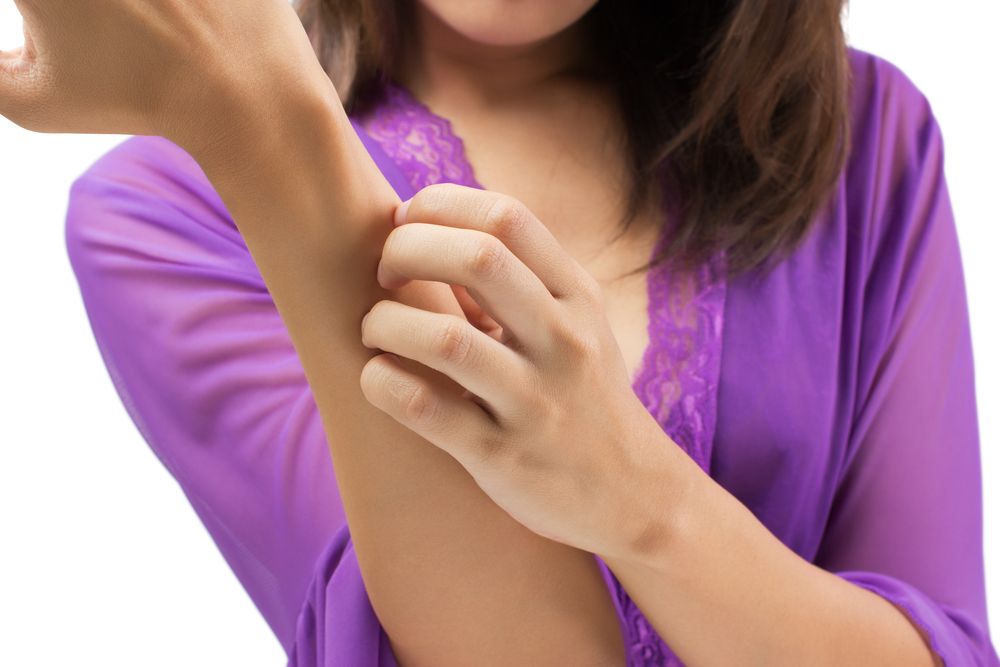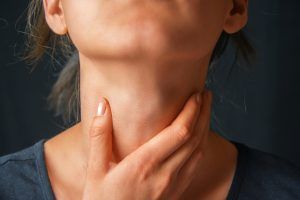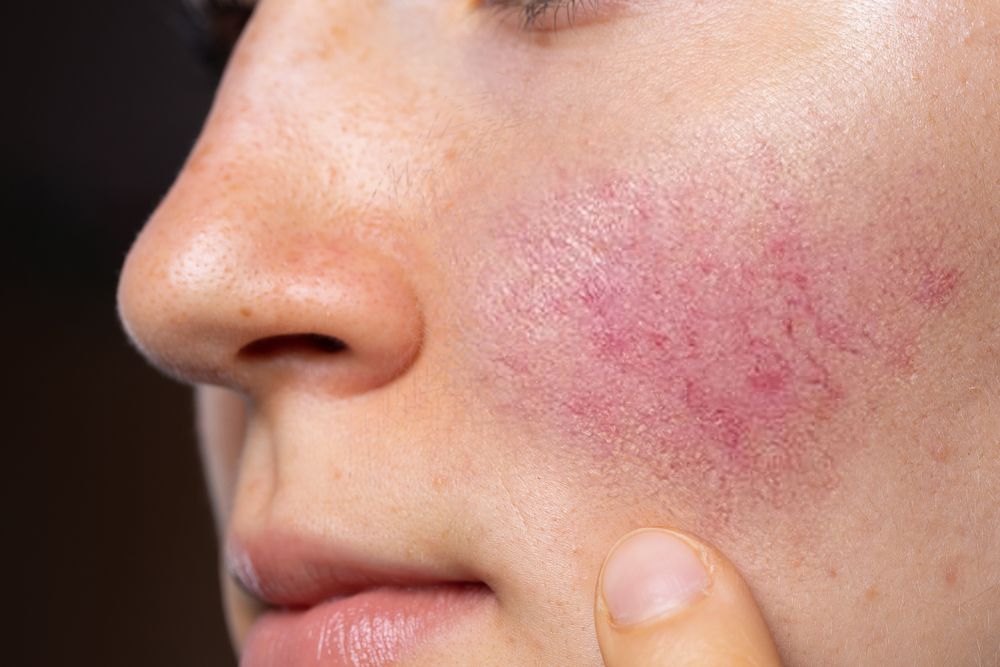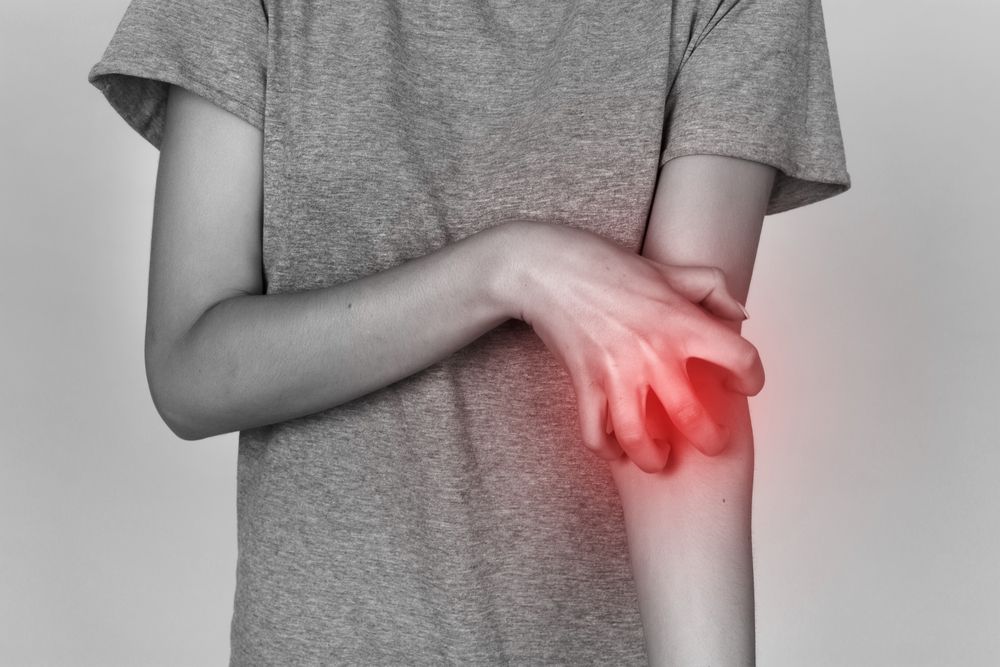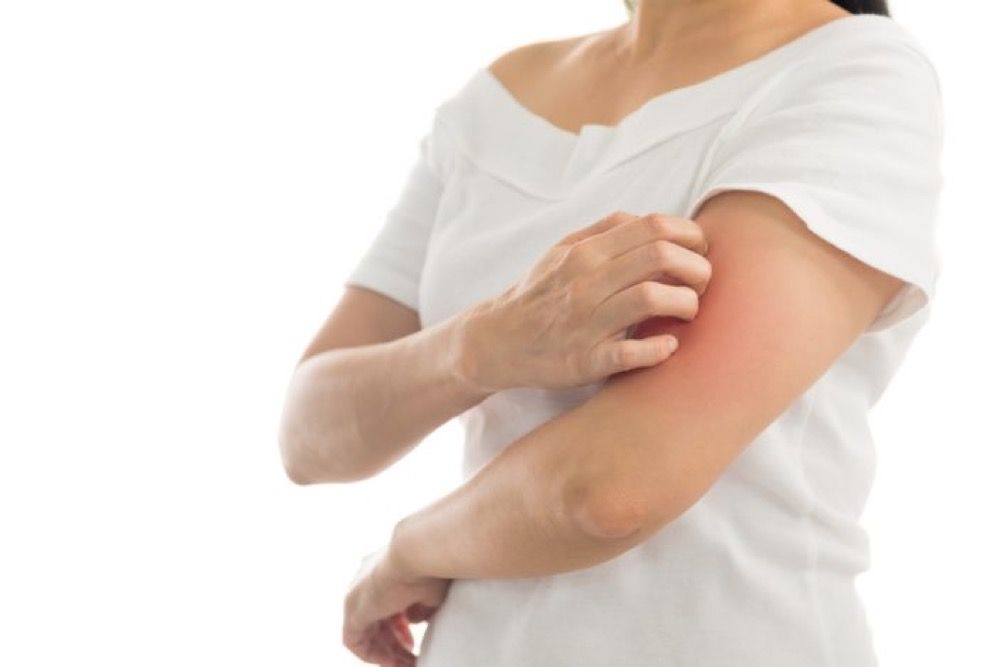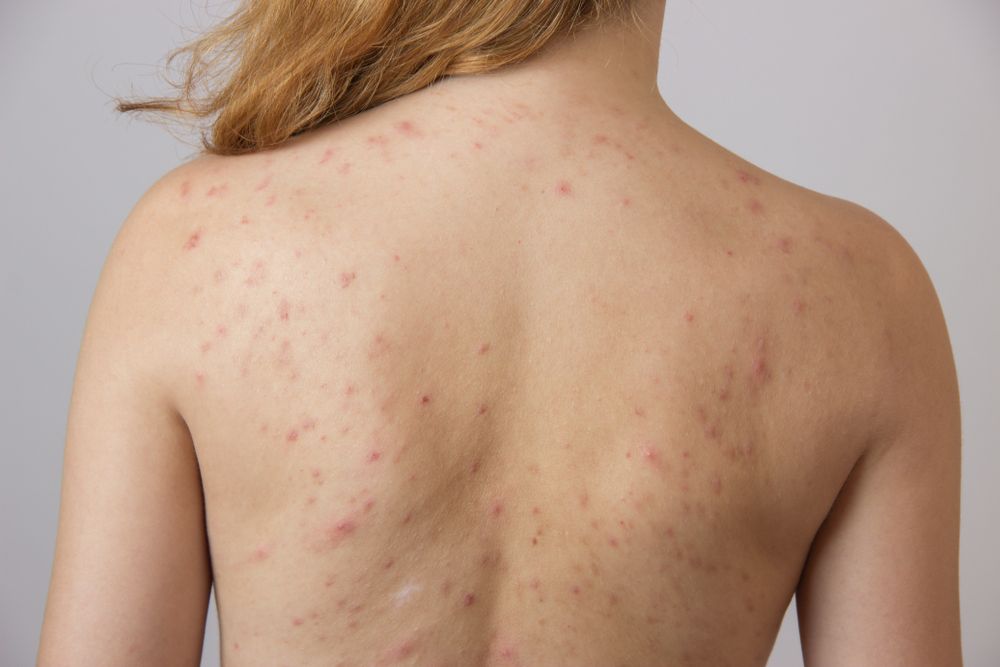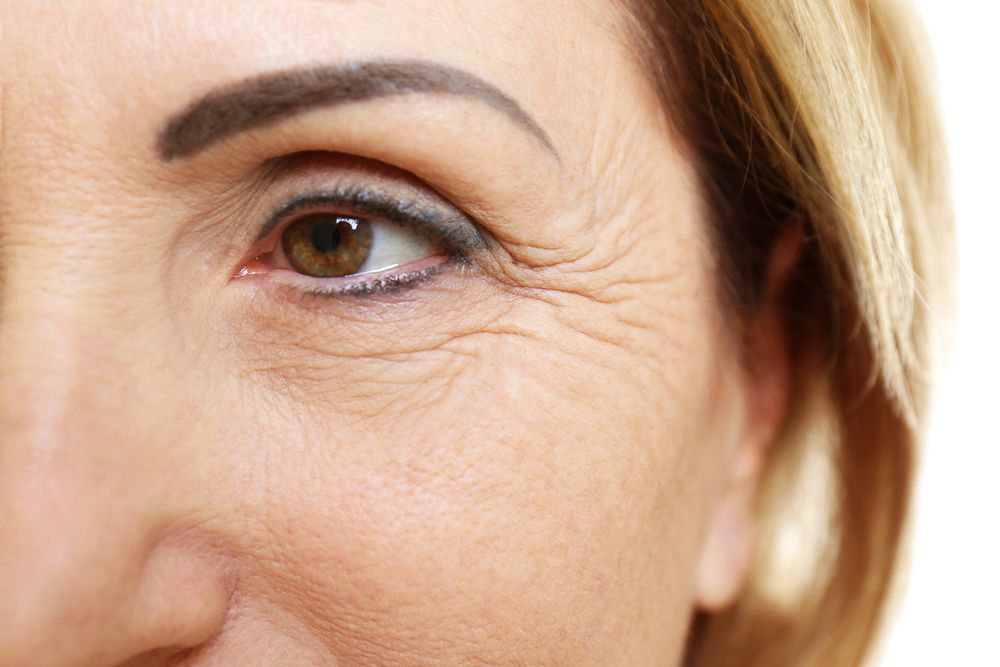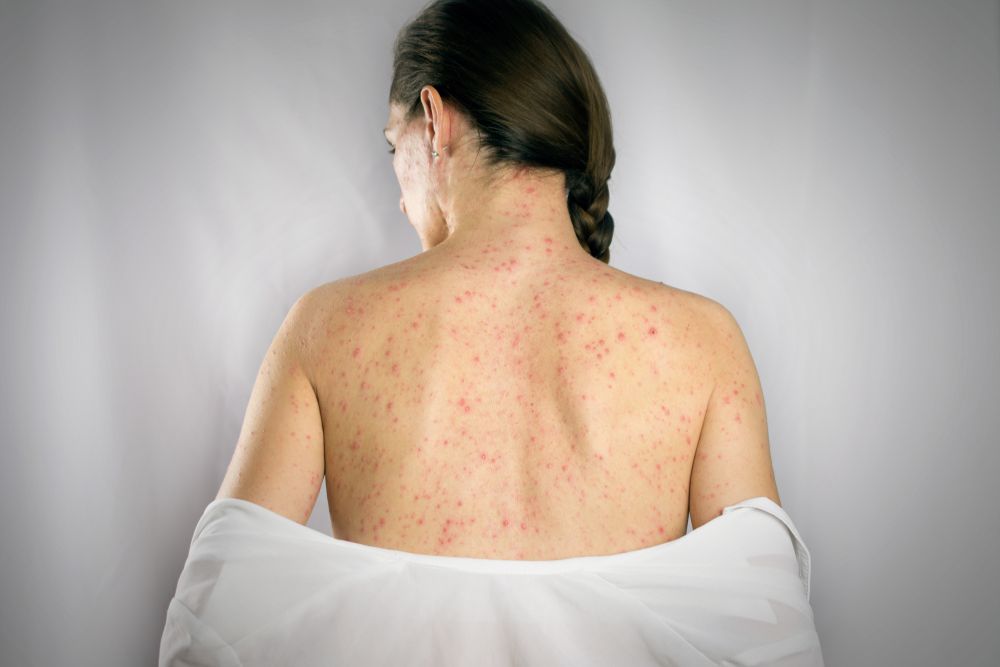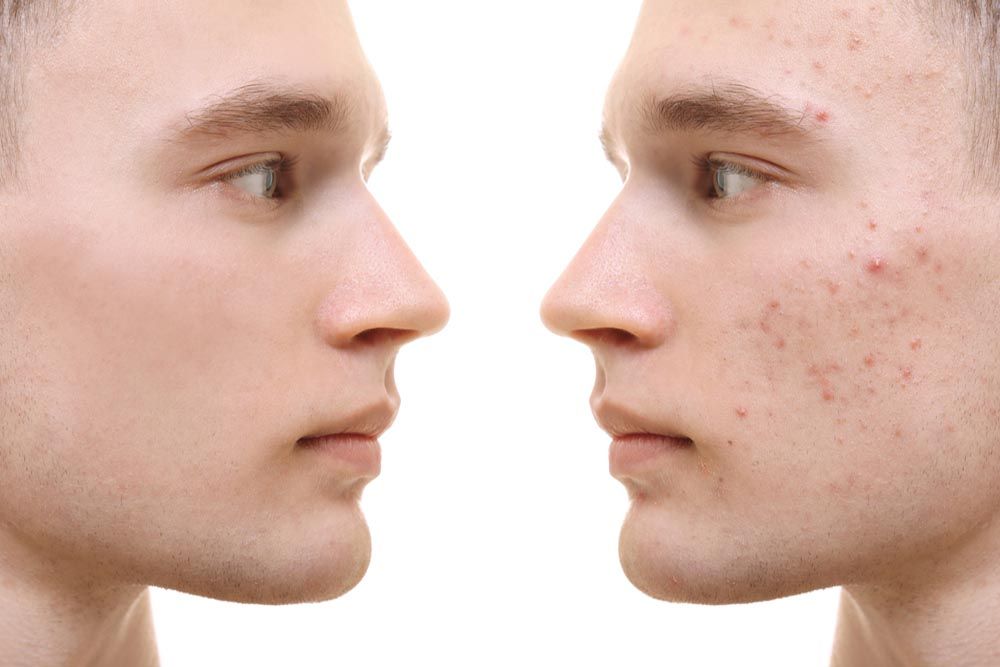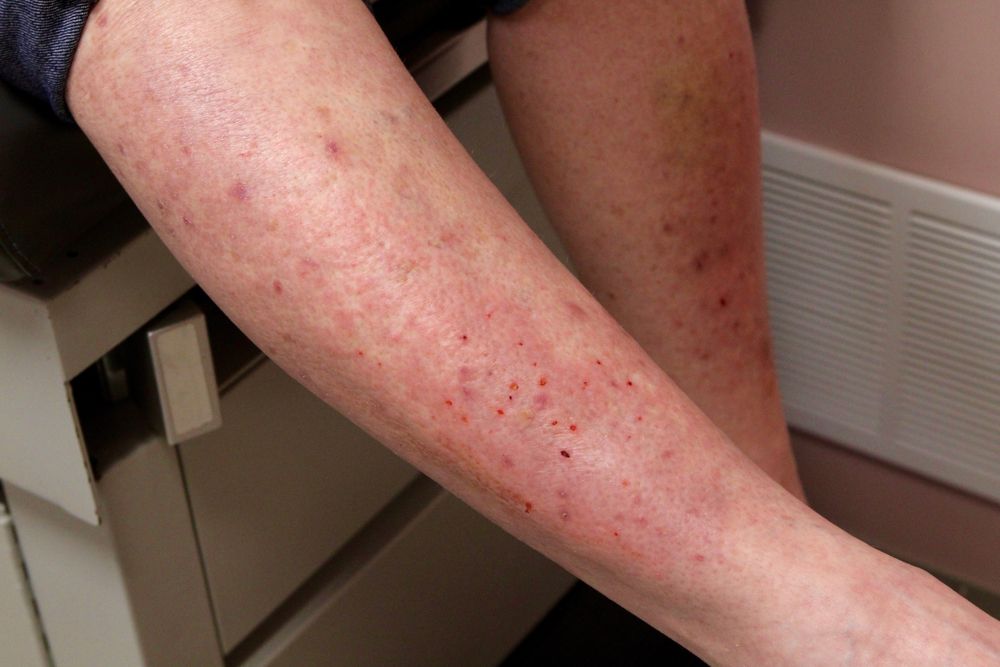Skin conditions involve anything that may change or harm the skin, from allergic reactions and toxins to infections or heredity. (Learn More)
There are several common skin conditions, which are often infectious. Sometimes, these illnesses become chronic and require a lifetime of prescription management, while others are acute and require a week or two of medication. (Learn More)
Most skin conditions will clear up on their own, but if symptoms persist, see a doctor or dermatologist. (Learn More)
What Are Skin Conditions?
The skin is the body’s biggest organ, shielding the internal organs and tissues from external harm. The skin can still break, become damaged, or get infected, and these problems can cause a range of skin conditions.
Potential causes of skin conditions, either temporary or chronic, include the following:
- Allergens
- Environmental irritants
- Toxins
- Infections from viruses, bacteria, parasites, or fungi
- Heredity
Because there are so many types of skin conditions, there are many different symptoms, associated problems, and treatments. A medical professional is needed to appropriately diagnose and treat skin conditions, from rashes to genetic disorders.
You may receive a recommendation for an over-the-counter medication to use as needed, or you may be told to monitor the condition’s progress and come back if it does not go away. In some cases, you may receive prescription medication that will fight the infection or suppress your immune system to manage the disease over time.
Common Skin Conditions and Their Treatments
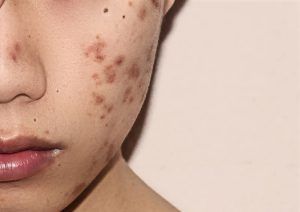
There are several common skin disorders that range from temporary irritation to permanent outbreaks. These may be caused by allergens or irritating chemicals in the environment, pathogens, insect bites, or a genetic predisposition.
The most common symptoms of any skin irritation include visible bumps or rash, itching, burning, changes to the color or texture of the skin, broken skin, or swelling. The specific symptoms will vary based on the condition’s cause. Treatment approaches will change based on whether the infection is mild or severe and temporary or permanent.
- Acne: This is one of the most common skin disorders, affecting the skin’s oil glands and hair follicles through pores, which are small holes in the skin that connect to oil glands in the dermis. The glands attached to pores create an oily substance called sebum, which is distributed to the skin’s surface through the follicle. This allows for the removal of dead skin cells and other detritus from the skin, keeping it clean.
Changes to the body’s biome, including hormonal shifts and infection, can lead skin cells, sebum, and other particles to collect in the pore and plug the opening. This will begin to swell, breaking down the plug and leading to a raised bump called a pimple.
Pimples are common on the face, neck, shoulders, chest, and back. Acne is not a serious threat, and it is common in many people around puberty; however, serious acne can lead to scars.
Doctors are not sure what causes acne despite it being very common. Even if it is unsightly or embarrassing, most doctors will not prescribe medications to manage the condition unless it is severe and outbreaks do not stop.
Keeping the skin clean is the primary treatment. It is important to avoid squeezing, poking, or popping pimples in an attempt to remove them, as this can make the condition worse and may spread infection.
Cases of severe acne that does not go away and may cause scarring will be treated by a dermatologist. Prescription medications to treat acne reduce oil production, speed up skin cell turnover, reduce inflammation, and fight bacterial infection.
Medications and therapies may include:- Antibiotics like Benzaclin, Duac, and Acanya, which stop bacteria from spreading.
- Dapsone (Aczone), which is a twice-daily gel application to reduce acne swelling, especially in adult women with chronic acne.
- Extraction of whiteheads and blackheads that are not cleared up by topical medications.
- Retinoids and retinoid-like drugs, which are topical creams, gels, or lotions applied in the evening, three times per week at first and then daily to prevent hair follicle plugging. Brands include Avita, Retin-A, and Differin.
- Oral contraceptives, like Ortho Tri-Cyclen or Yaz, which change the hormonal balance in women.
- Allergies: Everyone will experience a skin irritation at some time, which may be the immune system reacting to an environmental toxin or allergen.
Hives are raised, itchy areas on the skin that may be red, and they can range in size and appear anywhere on the body. Angioedema is similar to hives, but it occurs in deeper layers of the skin. Dermatitis is an inflammation of the skin producing a scaly, itchy, red rash. These conditions are associated with the immune system reacting to a substance like latex, a food, insect bite, or cleaner, which may irritate the skin and cause the body to react to the foreign particle.
Treatment includes: -
- Topical ointments like steroids, calcineurin inhibitors, or phosphodiesterase-4 inhibitors.
- Antihistamines.
- Antibiotics to treat bacterial infections due to skin breaking.
- Avoiding allergens.
- Omalizumab, an injectable biological therapy.
The most commonly diagnosed form of skin allergy is dermatitis, usually called contact dermatitis.
- Cellulitis: This is a very common bacterial skin infection, caused by a crack or break in the skin that becomes infected. The condition may become serious, but this is rare.
Infected skin will appear swollen and red, and it may be painful and warm to the touch. This type of infection is most common in the lower legs, but it may occur in the upper body or face.
When infections like cellulitis are left untreated, they can spread to the lymph nodes or blood stream, which can spread the infection around the rest of the body. The following are symptoms:- Red area on the skin that may expand if the infection spreads
- Swelling and tenderness of the infected area
- Pain and warm skin
- Fever
- Red spots
- Blisters
- Skin dimpling
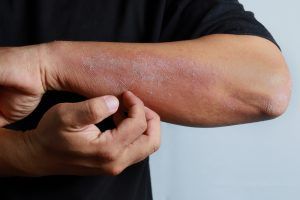
If you develop a rash or sore area that changes and spreads rapidly, or you have an accompanying fever, see a doctor for treatment. Mild cases of cellulitis can go away on their own, but severe cases may require prescription antibiotics.
- Eczema: This is a term for atopic dermatitis, which is a skin condition that may have several root causes. The most common symptoms are dry, itchy skin; rashes on the face, inside the elbows, behind the knees, and on the hands and feet; and skin redness due to scratching the itches and spreading the problem.
The cause of eczema is unknown, but it is not contagious. It is most common in babies or young children, although it has been known to appear in adults too.
Treatments include topical creams to reduce inflammation, skin dryness, and itching; light therapy; skin hygiene practices; and avoiding potential irritants like perfumes, fabric, or some types of lotion. - Herpes: Three types of herpes virus commonly infect the skin: herpes simplex 1, which causes cold sores or fever blisters around the mouth; herpes simplex 2, which causes genital herpes; and herpes zoster, which causes chicken pox and, if it becomes active after a childhood infection, shingles.
Symptoms of herpes simplex 1 and 2 include red bumps, blisters, or sores near the area where the virus entered the body, which become itchy and painful, and then heal over a few days or weeks. Over time, you will experience fewer outbreaks, but the conditions are chronic. You may receive a prescription for an antiviral medication like Valtrex, which will suppress the virus and associated symptoms, either as needed when an outbreak occurs or regularly to prevent you from experiencing more than a few outbreaks in a year.
Chickenpox is a common childhood illness that results in itchy, red bumps all over the skin. It is extremely infectious. For people with weaker immune systems or who do not contract the virus until adulthood, the acute phase of varicella-zoster virus can be dangerous. In children, however, it lasts for a few weeks, and a vaccination can help to prevent this condition. Shingles is the reactivation of the virus in adulthood, and this may require a prescription for an immunosuppressant like Valtrex. - Psoriasis: This is a common skin condition that speeds up the life cycle of skin cells, so these cells build up rapidly on the surface of the skin and cause scaly areas or red patches. Skin may crack and bleed and feel itchy. Joints may become swollen or stiff.
While it is a chronic condition, symptoms may come and go, so treatment focuses on stopping rapid growth of cells.
There is no specific cause for psoriasis, but it is not a contagious disease. However, people with psoriasis may be at higher risk for type 2 diabetes, obesity, heart disease, eye diseases, and other problems. Lifestyle changes include quitting smoking, reducing alcohol consumption or quitting drinking, moisturizing more often, and managing stress. - Ringworm: This is a common fungal infection that causes a raised, wavy-bordered rash. It is most common as athlete’s foot, jock itch, on the scalp, on the finger or toenails, or on the hands.
This is a very infectious fungus, so prescription antifungals that you either apply directly to the skin or take orally will be required to clear it up. - Rosacea: This common skin condition causes redness and more visible blood vessels in the face. It may be mistaken for a skin allergy or acne; however, if symptoms — swollen red bumps, eye problems, enlarged nose, and facial redness — do not go away, you may need to see a doctor. Oral antibiotics like doxycycline, topical gels like Mirvaso, or acne medications like isotretinoin (Amnesteem or Claravis) can reduce symptoms.
Medical Help Improves Skin Conditions
If you experience any changes to your skin that hurt, are associated with fever, contain pus, or cause the skin to hurt and crack, see a dermatologist for a diagnosis and appropriate medical treatment.
Many skin conditions clean up on their own, but if you experience intense symptoms or conditions that do not begin to clear up after a few days, a dermatologist’s opinion is needed.
References
Skin Conditions, Explained. (May 3, 2018). Health.
All About Common Skin Disorders. (April 16, 2016). Healthline.
What Is Acne? (September 1, 2016). National Institute of Arthritis and Musculoskeletal Diseases (NIAMS).
Acne: Diagnosis and Treatment. (December 27, 2018). Mayo Clinic.
Allergic Skin Conditions. American Academy of Allergy, Asthma, and Immunology (AAAAI).
Skin Allergy Treatment and Management. American Academy of Allergy, Asthma, and Immunology (AAAAI).
Boils and Carbuncles. (March 6, 2018). Mayo Clinic.
Cellulitis. (April 10, 2018). Mayo Clinic.
Eczema. (August 15, 2016). MedlinePlus.
Herpes Simplex. (November 2, 2018). MedlinePlus.
Herpes Zoster. (February 2018). Merck Manual: Professional Version.
Psoriasis. (March 13, 2019). Mayo Clinic.
Ringworm. (2018). American Academy of Dermatology (AAD).
Rosacea. (March 10, 2018). Mayo Clinic.

